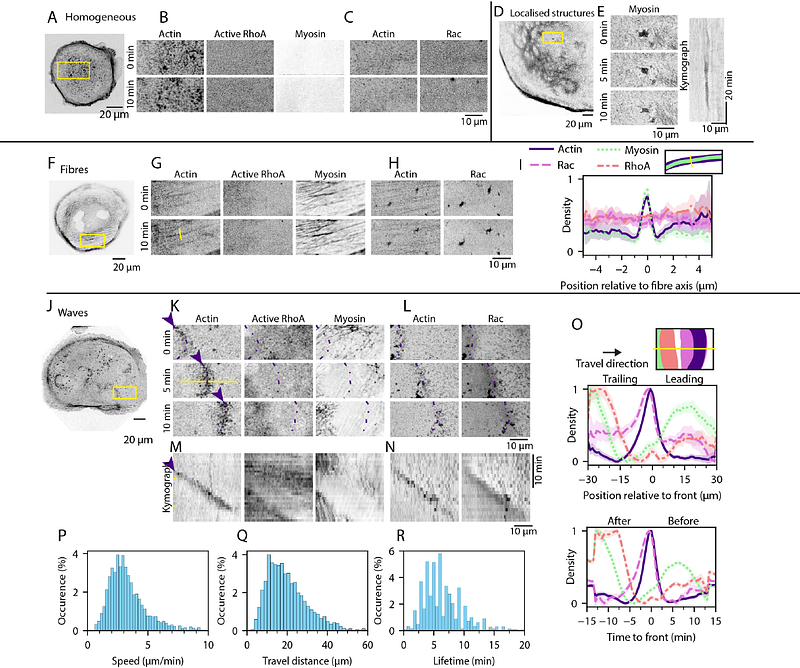Interplay between Rac1/RhoA and actin waves in giant epithelial cells : experiment and theory

Interplay between Rac1/RhoA and actin waves in giant epithelial cells : experiment and theory
Berthoz, R.; Li, H.; Andre, M.; Lieb, M.; Hinderling, L.; Graedel, B.; Van Unen, J.; Pertz, O.; Kruse, K.; Riveline, D.
AbstractThe acto-myosin cytoskeleton is a key driver of cellular shape changes in vivo and in vitro. Acto-myosin organization results from actin assembly and interactions between actin and myosin, which are both regulated by small Rho GTPases like Rac1 and RhoA. To uncover principles governing cytoskeletal organization, we analyzed actin patterns using live microscopy and theory. In giant Madin-Darby Canine Kidney (MDCK) epithelial cells and REF52 fibroblasts, we observed acto-myosin stress fibres and propagating waves. Stress fibres were stationary and correlated with homogeneous distributions of Rac and RhoA activity. Waves propagated at 1 um/min and were associated with density variations of actin, Rac and active RhoA. Some waves transported cellular components or generated protrusions at the cell edge. Essential features of wave propagation are captured by a polar reaction-diffusion system for actin and Rac. Notably, two colliding waves annihilate each other. In cells, myosin activity was not required for the emergence of waves, but tended to suppress them. Consistently, local activation of RhoA slowed down or stopped and broke waves. These results highlight how the coupling between acto-myosin and Rho GTPase generates a variety of cytoskeletal structures and dynamics